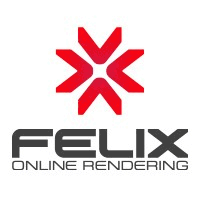What Is Architectural Rendering Software?
Architectural rendering software allows architects, designers, and real estate professionals to produce lifelike 2D and 3D renderings of architectural designs. It enables users to virtually replicate a building's façade and interior, including texturing, lighting, furniture, and landscaping, before construction begins. This sort of software is intended to assist speed the design process, increase customer communication, and minimize mistakes and modifications.
One of the most notable advantages of architectural rendering software is its ability to properly imitate real-world lighting conditions, materials, and textures. Users may see how a structure will look in different lighting situations and finishes, allowing them to make better educated design decisions. Furthermore, powerful rendering software frequently incorporates lighting and material customization capabilities, giving designers more flexibility and creative freedom.
Another important feature of architectural rendering software is the capacity to create realistic 3D models. These 3D models are simply adjusted to show a building from many angles and views, resulting in a more immersive and full knowledge of the design. This is especially useful during client presentations and evaluations, since stakeholders can better envisage the finished result.
Architectural rendering software not only creates visually attractive models of structures, but it also provides useful design and collaborative capabilities. Many applications incorporate measuring tools, virtual walkthroughs, and commenting and markup options, which facilitate communication between designers and clients.
Architects and designers may benefit immensely from architectural rendering software, which provides a full visual picture of a project before construction begins. This can save time and money by preventing possible problems and decreasing the need for expensive design changes. If you're looking for architectural rendering software, be sure the features and capabilities match your demands and process.
Some considerations are simplicity of use, interoperability with other design applications, rendering speed and quality, and cost. Understanding the capabilities and benefits of various software solutions allows you to make an informed selection and locate the ideal solution for your architectural rendering requirements.
What Are the Recent Trends in Architectural Rendering Software?
Recent Trends in Architectural Rendering Software: As technology has advanced, architectural rendering software has seen substantial evolution.
Here are some of the most recent developments that are impacting the market and influencing the decisions of architects, designers, and rendering software buyers:
1. Real-Time Rendering: The introduction of real-time rendering capabilities has been one of the most significant advances in architectural rendering software. This enables users to see changes to the produced picture or video in real time, making the design process more efficient. Real-time rendering also allows team members to collaborate by making fast changes and seeing the outcomes.
2. Virtual and Augmented Reality: The architecture industry is gradually adopting virtual and augmented reality technologies, and rendering software is following suit. Architects may use virtual and augmented reality technologies to build interactive 3D models that customers can explore and experience using a headset. This not only improves the creative process, but also creates a more immersive experience for customers.
3. AI Integration: Artificial intelligence (AI) is making an impact in architecture, including rendering software. Rendering software uses AI algorithms to evaluate and handle vast volumes of data, resulting in quicker, more accurate rendering. AI can also help to automate certain activities, allowing architects and designers to focus on the more creative elements of their profession.
4. Cloud-Based Rendering: Cloud-based rendering is gaining popularity since it enables users to access rendering applications and projects from anywhere with an internet connection. This is especially useful for remote and distant teams, making cooperation and project sharing simpler.
5. Mobile Rendering: As smartphone usage increases, mobile rendering becomes more significant. Many rendering software providers now provide mobile versions of their applications, allowing customers to work on projects while on the go. This trend is especially useful for architects and designers who travel frequently or must present representations to customers on-site.
Benefits of Using Architectural Rendering Software
Architectural rendering software enables architects, designers, and real estate experts to produce spectacular and realistic renderings of their projects. It enables users to create high-quality photographs and films of structures, interiors, and landscapes before they are created.
But, what are the special advantages of employing architectural rendering software? Let's look at the numerous advantages that this program provides.
1. Accurate Representation of Design: One of the most significant advantages of employing architectural rendering software is its ability to precisely portray the design of a project. Users can utilize powerful 3D modeling and rendering techniques to produce virtual models that closely mimic the actual building. This promotes greater communication and understanding among clients, architects, and constructors, ensuring that the finished result meets the original objective.
2. Cost-effective: Traditional visualization approaches, such as physical models or hand-drawn sketches, may be time-consuming and costly. Architectural rendering software minimizes these expenditures while also saving customers time by allowing them to rapidly and simply make modifications and explore various design possibilities. This not only saves money, but also provides clients with a clearer picture of what their project will look like, decreasing the likelihood of costly design revisions during the building process.
3. Increased Design Flexibility: Architectural rendering software allows for virtually limitless design options. Users may play with different materials, colors, lighting, and textures to create lifelike photos and animations. This kind of flexibility enables architects to provide customers with many design possibilities, giving them greater control over the project's eventual conclusion.
4. Improved Marketing and Sales: In today's competitive real estate market, standing out is critical. Architectural rendering software allows you to produce visually appealing presentations that may be utilized in marketing brochures, sales pitches, and web listings. This not only impresses potential clients, but also improves the possibilities of concluding transactions and increasing interest in the project.
5. Time-saving: As the adage goes, "Time is Money." Architectural rendering software allows designers to work more effectively and generate high-quality pictures and films in a fraction of the time that older approaches would take. This enables for a quicker return time, offering clients a greater grasp of their project and expediting the design process.
6. Collaborative Design Process: Another key advantage of architectural rendering software is its ability to promote cooperation. Designers may use the program to collaborate on concepts, make real-time modifications, and receive feedback from customers or team members. This simplifies the design process, keeps everyone on the same page, and results in better, more accurate designs.
Important Factors to Consider While Purchasing Architectural Rendering Software?
When it comes to selecting the best architectural rendering software for your purposes, there are numerous key things to consider. This ensures that you make an informed selection and choose software that will help you create spectacular and realistic architectural representations.
Here are the major considerations to consider while selecting architectural rendering software:
1. Type of Rendering: The first item to evaluate is the software's rendering capabilities. There are two primary forms of architectural rendering: real-time and offline. Real-time rendering enables the rapid display of changes, but offline rendering takes longer but generates higher-quality pictures. Before picking a program, determine which type best meets your demands.
2. Features and Tools: Different software provides various features and tools to aid in the rendering process. Pay attention to the details that matter to you, such as lighting, materials, landscape, and post-processing effects. Ensure that the program includes all of the capabilities required for your unique rendering needs.
3. User-Friendly Interface: The software's interface should be straightforward and simple to use. This will make the rendering process go more smoothly and efficiently. Look for software that has a simple and structured interface, as well as configurable options to fit your workflow.
4. Compatibility: Before using the program, make sure it is compatible with your computer's operating system and hardware. Some applications may require strong hardware to function properly, whilst others may have specified requirements for graphics cards or RAM.
5. Pricing and license: The software's cost and license conditions must be considered. Some software may be available as a one-time purchase, while others may require a monthly or annual subscription. Consider your budget and the continuing costs of employing the program before making a selection.
6. Customer Support: A dependable and competent customer support team is essential while utilizing any product. Look for organizations who have many support channels and have an excellent track record of responding to client questions and concerns quickly.
What Are the Key Features to Look for in Architectural Rendering Software?
When selecting the best architectural rendering software, purchasers should consider a few crucial aspects. These elements are critical for producing high-quality, visually appealing drawings that effectively represent design intent.
The following are the key qualities to look for while picking architectural rendering software.
1. Realistic Renderings: The major goal of architectural rendering software is to provide realistic and lifelike visual representations of building projects. To obtain photorealistic effects, use software with powerful rendering features like as global lighting and precise texture and material mapping.
2. Multiple Output Formats: The program should support a wide range of output formats, such as still photographs, animations, and virtual reality (VR) tours. This enables the design to be presented in a variety of ways, meeting the demands of clients, project stakeholders, and marketers.
3. Usability: Architects and designers value their time. As a result, the program should feature an easy-to-use interface and straightforward capabilities to speed up and optimize the rendering process. This also allows experts with different degrees of 3D knowledge to create high-quality renderings.
4. Compatibility: It is critical to select software that works easily with your existing design tools, such as CAD or BIM. This allows for the easy transfer of 3D models, decreasing the time and effort necessary to make renderings.
5. Lighting and Material Libraries: A diverse set of pre-built lighting and material libraries may considerably accelerate rendering and improve visual quality. To generate unique and personalized renderings, look for software that allows you to customize the lighting and materials.
6. Real-Time Rendering: Some software now supports real-time rendering, allowing designers to make adjustments and view the results immediately. This saves time and effort while creating a more fluid and dynamic process.
7. Cost and Licensing Options: The cost of architectural rendering software varies, therefore it is critical to examine your budget and compare the features against the price. In addition, search for software that provides various licensing choices, such as monthly or yearly subscriptions, to accommodate the individual demands and scope of projects.
8. Technical Support and Training: Learning and mastering the tools and capabilities of new software takes time, just like any other. Look for software that includes technical support and training tools to help you get the most out of the product and fix any problems that may emerge.
9. Collaboration and Project Management: Choose rendering software that enables team members to collaborate and manage projects together. This allows numerous specialists to collaborate on the same project at the same time, speeding up the design process and increasing communications.
10. Mobile-Friendly: With the development of remote work and the necessity for on-the-go access, it is wise to select software that is compatible with mobile devices. This enables fast access and quick sharing of work, making cooperation more efficient. In conclusion, while looking for architectural rendering software, consider the aspects listed above to ensure high-quality and efficient depiction of your architectural ideas. Finding the correct software and tools may significantly improve your presentation and propel your ideas to the next level.
Why Do Businesses Need Architectural Rendering Software?
Businesses in the design and construction sectors rely extensively on visualization to convey their ideas to clients, investors, and project stakeholders. Traditionally, this was accomplished using hand-drawn drawings or real 3D models, which can be time-consuming and costly. However, as technology has advanced, architectural rendering software has become a crucial tool for organizations seeking to produce accurate renderings of their projects.
One of the most significant benefits of utilizing architectural rendering software is the ability to produce extremely realistic and precise 3D models of buildings and structures. This not only helps businesses enhance the correctness of their designs, but it also allows them to present their work in a more professional and stunning light. Businesses may use this software to easily convey their ideas, allowing clients to comprehend and support the project.
Furthermore, architectural rendering software allows firms to experiment with numerous design components, materials, and textures, allowing them the freedom to modify their ideas until they obtain the desired outcome. This can save firms time and money in the long term by preventing costly errors and redesigns. Another important feature that makes architectural rendering software vital for organizations is its capacity to create a photorealistic depiction of the designs.This is extremely beneficial when presenting projects to clients or creating marketing materials since it helps potential buyers to imagine the finished product properly.
This can have a significant influence on their decision-making process and boost your chances of earning their confidence and acceptance. Furthermore, architectural rendering software includes capabilities like virtual tours and walkthroughs, which may be game changers for firms.
It enables them to provide clients an immersive experience, providing them a genuine sense of the project before it is ever completed. This not only helps businesses amaze their customers, but also gives them a competitive advantage in the market.
How Much Time Is Required to Implement Architectural Rendering Software?
The installation time for architectural rendering software varies based on the program, project complexity, and team skills. On average, it might take between a few weeks and a few months to properly adopt and integrate the program into your workflow.
Factors that can influence implementation time include:
1. Program Familiarity: If your team is already familiar with the program or has used comparable tools before, the implementation process may be shortened.2. Training and onboarding: If your staff is new to the program, you will need to set aside time for training and onboarding to ensure they fully grasp how to use it and its capabilities.
3. Customization: If the program allows for customization, you may need to devote extra time to this phase in order to fit the software to your individual requirements and preferences.
4. Project complexity: The intricacy of your projects might also affect their implementation time. More complex projects may take more time to setup and render.
5. Integration With Current Tools: If you're connecting the program with existing tools or systems, it may take some time to achieve seamless integration and compatibility. To guarantee a seamless and efficient implementation process, you must first have a comprehensive grasp of your unique objectives and goals, as well as a well-defined implementation strategy and timeframe.
Furthermore, having a dedicated team or individual directing the deployment process ensures timely completion and proper use of the software's capabilities. Overall, while the implementation time may vary, putting in the time and effort to properly implement architectural rendering software can greatly benefit your design projects in the long run, providing you with enhanced visualization, time-saving tools, and improved team collaboration and communication.
What Is the Level of Customization Available in Architectural Rendering Software?
One of the most important considerations when selecting architectural rendering software is the amount of customization available. Whether you are a novice or a seasoned expert, being able to customize your rendering program to your individual requirements and preferences may significantly improve your workflow and result in more realistic and dramatic renderings. The amount of customization varies widely across different rendering software, therefore it is critical to grasp the alternatives before making a purchase.
When considering a software's customisation possibilities, some important factors to consider include:
1. Material and Texture Creation: Look for software that allows you to design and tweak your own materials and textures, rather than depending entirely on pre-set options. This increases the versatility and individuality of your representations.
2. Lighting and Environment Settings: Being able to modify and manipulate lighting and environment settings is critical for producing realistic renderings. Look for software that provides a variety of choices for manipulating the direction, intensity, and color of light sources, as well as the ability to add background components like trees and sky.
3. Camera Settings: A decent rendering program should let you change camera parameters including field of view, depth of field, and exposure. This degree of customisation enables you to create the ideal composition and visual effects in your renderings.
4. Sketchup Integration: If you use Sketchup for architectural design, search for rendering software that works perfectly with it. This enables you to simply import your Sketchup models and further edit them for rendering.
5. Plug-ins and Add-Ons: Some rendering software includes plug-ins and add-ons that provide additional customization choices. These might range from new material libraries to more powerful lighting and texturing tools. Consider your requirements and budget, and check if any additional features are available for the product you're interested in. Finally, the degree of customisation possible in architectural rendering software may significantly affect the quality and distinctiveness of your renderings. We recommend analyzing the software's capabilities in the areas outlined above to verify that it meets your individual requirements and creative vision.
Which Industries Can Benefit the Most from Architectural Rendering Software?
Architectural rendering software has become an indispensable tool in many sectors, allowing experts to graphically express their designs and ideas. Architectural rendering software may help a variety of businesses, including architects, interior designers, real estate developers, and marketing firms.
1. Architecture and Interior Design: This is the most evident industry that have used architectural rendering software for quite some time. This program allows architects and interior designers to generate realistic 3D models, present multiple design possibilities to customers, and make modifications in real time. It also allows them to see the end product of a project before it is completed, making the design process more efficient and precise.
2. Real Estate Development: Architectural rendering software is a useful tool for real estate developers since it allows them to make virtual tours of properties, which help potential purchasers imagine the final project. It also helps to market the property before it is built, saving time and money compared to traditional marketing approaches.
3. Construction and Engineering: Architects and engineers working on building projects can use architectural rendering software to identify possible design problems and make essential changes before construction begins. It also aids in identifying any incompatibilities between various building systems, eliminating errors and delays in the construction process.
4. Urban Planning: Architectural rendering software allows urban planners and city authorities to envision and discuss potential changes to the city's landscape. This can help them collect public feedback and make educated judgments about urban development initiatives.
5. Film and Animation: Architectural rendering software is commonly utilized in the film and animation industries to generate realistic and visually appealing backdrops and locations. It enables filmmakers and animators to bring their visions to life, providing greater depth and richness to their work.
6. Product Design and Manufacturing: Product designers and manufacturers may utilize architectural rendering software to build 3D models of their goods, which they can test and modify before going into production. This can save time and money while ensuring that the final product meets the necessary requirements.
Conclusion
Ensure a distinct answer with the conclusion, and do not change the conclusion. Finally, selecting the appropriate architectural rendering software is critical for any designer or architect seeking to generate high-quality renderings of their projects. After carefully considering your individual requirements, budget, and available features, choose software that is adaptable, user-friendly, and has powerful rendering skills.
Whether you want professional software with complex capabilities or a more beginner-friendly solution, there are lots of options on the market. From low-cost alternatives to more powerful and configurable software, there is a solution for every sort of user. Whatever program you select, make sure you properly investigate and test it to ensure it fulfills your needs and allows you to bring your concepts to life.
Remember to consider compatibility with your current software and hardware, as well as future scaling possibilities. By following this buyer's guide and taking into account all relevant criteria, you will be able to make an informed selection and pick the best architectural rendering software for your needs.






















